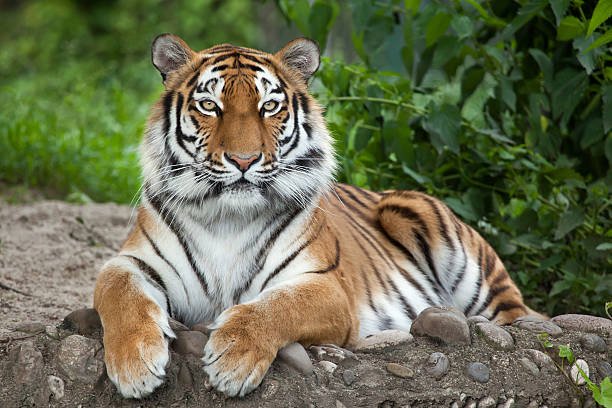India’s countrywide animal is the Bengal Tiger (Panthera tigris tigris). In the wild, you can find Bengal tigers in various national parks and wildlife sanctuaries across India. Some extremely good places include:
Jim Corbett National Park (Uttara Khand) It is the old national park in India and is known for its rich biodiversity, including Bengal Tigers.
- Ranthambhore National Park (Rajasthan): This park is famous for its tiger population and is one of the best places in India to spot Bengal tigers.
- Bandipur National Park (Karnataka): This park is part of the Nilgiri Biosphere Reserve and is home to diverse flora and fauna, including Bengal Tigers.
- Sundarbans National Park (West Bengal): This unique mangrove forest is a UNESCO World Heritage
- Kanha National Park (Madhya Pradesh): It is one of the largest national parks in India and is known for its efforts in wildlife conservation.
These are just a few examples, and there are many other national parks and wildlife sanctuaries across India where you may find the Bengal Tiger. Remember the tiger populations are endangered, and efforts are being made for their conservation and protection in various reserves. If you plan to visit these areas, please follow ethical wildlife viewing practices and guidelines to ensure the well-being of the animals.
A Tiger’s Life Expectancy
In the wild, the life expectancy of a tiger. can vary depend on factors such as species environmental conditions, and threats. The Bengal Tiger (Panthera tigris tigris), which is the most numerous tiger subspecies and the one found in India, generally has a life expectancy of about 8 to 10 years in the wild.
Several factors contribute to the relatively shorter lifespan of wild tigers. These include:
- Natural Threats: Tigers face threats from other predators, including other tigers. Cub mortality rates can be high due to predation by other animals.
- Human-Related Threats: Human activities, such as poaching, habitat loss, and conflicts with humans, pose significant threats to tigers in the wild. Poaching for their body parts and bones, as well as habitat destruction, are major concerns.
- Availability of Prey: The availability of prey in their natural habitat affects a tiger’s ability to survive and thrive. Changes in prey availability can impact their health and longevity.
In captivity, tigers tend to live longer than their counterparts in the wild. They may live into their late teens or even early twenties with proper care, diet, and veterinary attention. Zoos and wildlife sanctuaries play a crucial role in tiger conservation by providing a protected environment and often contribute to breeding programs to help maintain genetic diversity in the captive population.
Why became the tiger specific as India’s countrywide animal?
The Bengal Tiger (Panther tiger ) was designated as India’s national animal to symbolize the country’s wildlife wealth and conservation efforts. The decision to choose the tiger as the national animal was driven by several reasons.
- Symbol of Strength and Power: The tiger is considered a symbol of strength, power, and courage in Indian culture.
- Biodiversity and Conservation: India is home to a diverse range of wildlife, and the Bengal Tiger is one of the most iconic and endangered species. Designating the tiger as a national animal serves as a reminder of the need for wildlife conservation and the importance of preserving biodiversity.
- Ecological Balance: Tigers play a crucial role in maintaining ecological balance by regulating the populations of prey species. They are at the top of the food chain in their ecosystems, and their presence is indicative of a healthy and balanced ecosystem.
- Global Significance: The Bengal Tiger is not only significant for India but also holds global importance as an endangered species. The conservation of the tiger has international implications, and India has been actively in global efforts to protect and conserve this species.
- Awareness & Conservation Campaigns: The designation of the tiger as the national animal has been used as a symbol to raise awareness about wildlife conservation in India.
Overall, the selection of the Bengal Tiger as India’s national animal reflects the country’s commitment to the conservation of its rich biodiversity and the recognition of the tiger’s ecological and cultural significance.
Internal link: bilaar







